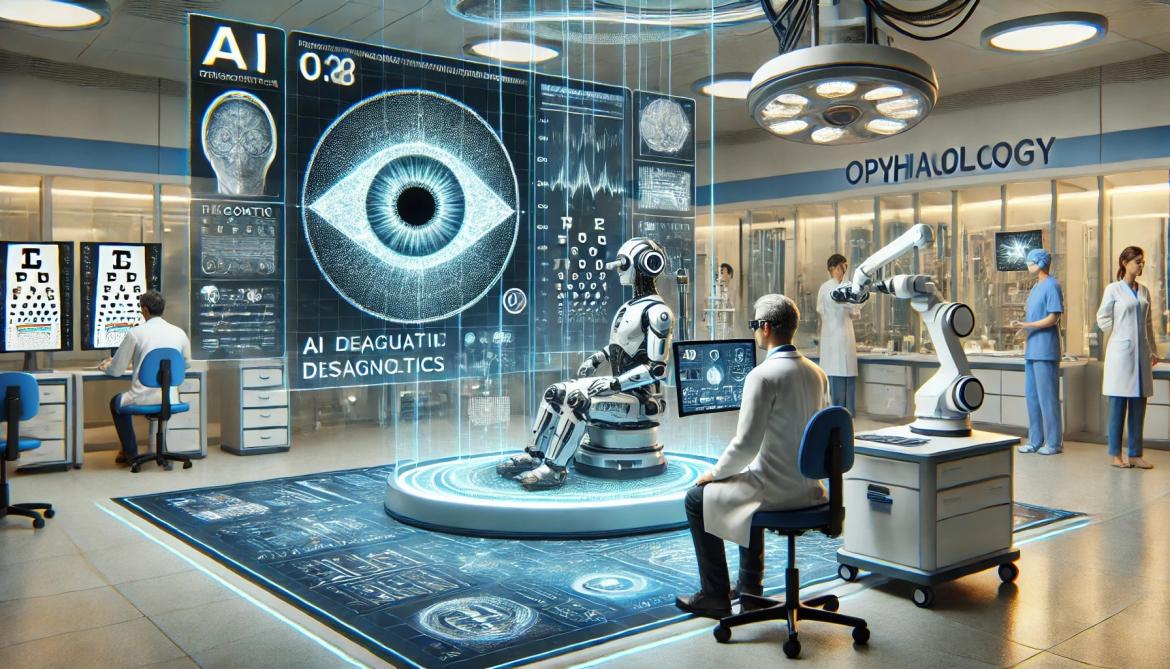The Future of Eye Care: How AI and Robotics Are Revolutionising Ophthalmology

Introduction
In the rapidly evolving field of ophthalmology, artificial intelligence (AI) and robotics are paving the way for groundbreaking advancements. These technologies are not only enhancing diagnostic accuracy but also revolutionising surgical procedures, leading to improved patient outcomes. This blog explores the transformative impact of AI and robotics in eye care and what the future holds for these innovative technologies.
AI in Diagnostics
AI-powered diagnostic tools are significantly enhancing ophthalmologists' ability to detect and treat eye conditions early. Machine learning algorithms can analyse vast amounts of data from retinal scans and other imaging techniques to identify patterns indicative of diseases such as diabetic retinopathy, age-related macular degeneration, and glaucoma.
One notable example is Google's DeepMind, which has developed an AI system capable of diagnosing over 50 eye diseases with accuracy comparable to expert ophthalmologists. These AI systems can quickly and accurately analyse images, providing a reliable second opinion and allowing for earlier intervention.
Robotic-Assisted Surgeries
Robotic technology is also making waves in ophthalmic surgery. Robotic-assisted surgeries offer greater precision, reduced recovery times, and minimised risk of complications. One such innovation is the da Vinci Surgical System, which allows surgeons to perform delicate eye surgeries with enhanced precision and control.
Additionally, the development of robotic microsurgery systems, such as the PRECEYES Surgical System, enables surgeons to perform highly intricate procedures on the retina with unparalleled accuracy. These systems provide real-time feedback and stability, reducing the likelihood of errors and improving surgical outcomes.
Telemedicine and Remote Consultations
AI and robotics are also facilitating remote consultations and telemedicine in ophthalmology. AI-powered diagnostic tools can be integrated into telemedicine platforms, allowing patients to receive accurate diagnoses and treatment recommendations without needing to visit a clinic. This is particularly beneficial for individuals in remote or underserved areas, ensuring they have access to quality eye care.
The Future of AI and Robotics in Ophthalmology
The future of AI and robotics in ophthalmology looks promising, with ongoing research and development aimed at further enhancing these technologies. Potential advancements include the integration of augmented reality (AR) and virtual reality (VR) in surgical training and procedures, as well as the development of fully autonomous robotic systems capable of performing complex surgeries independently.
Furthermore, the use of AI in personalised medicine is expected to grow, allowing for tailored treatment plans based on an individual’s unique genetic makeup and health profile. This approach has the potential to revolutionise the way eye diseases are treated, leading to more effective and targeted therapies.
Conclusion
AI and robotics are undoubtedly revolutionising the field of ophthalmology, offering new possibilities for diagnosis, treatment, and patient care. As these technologies continue to evolve, they hold the promise of improving the quality of life for millions of people worldwide by providing more accurate, efficient, and accessible eye care solutions. Embracing these innovations will be crucial in shaping the future of eye care and ensuring better outcomes for patients.